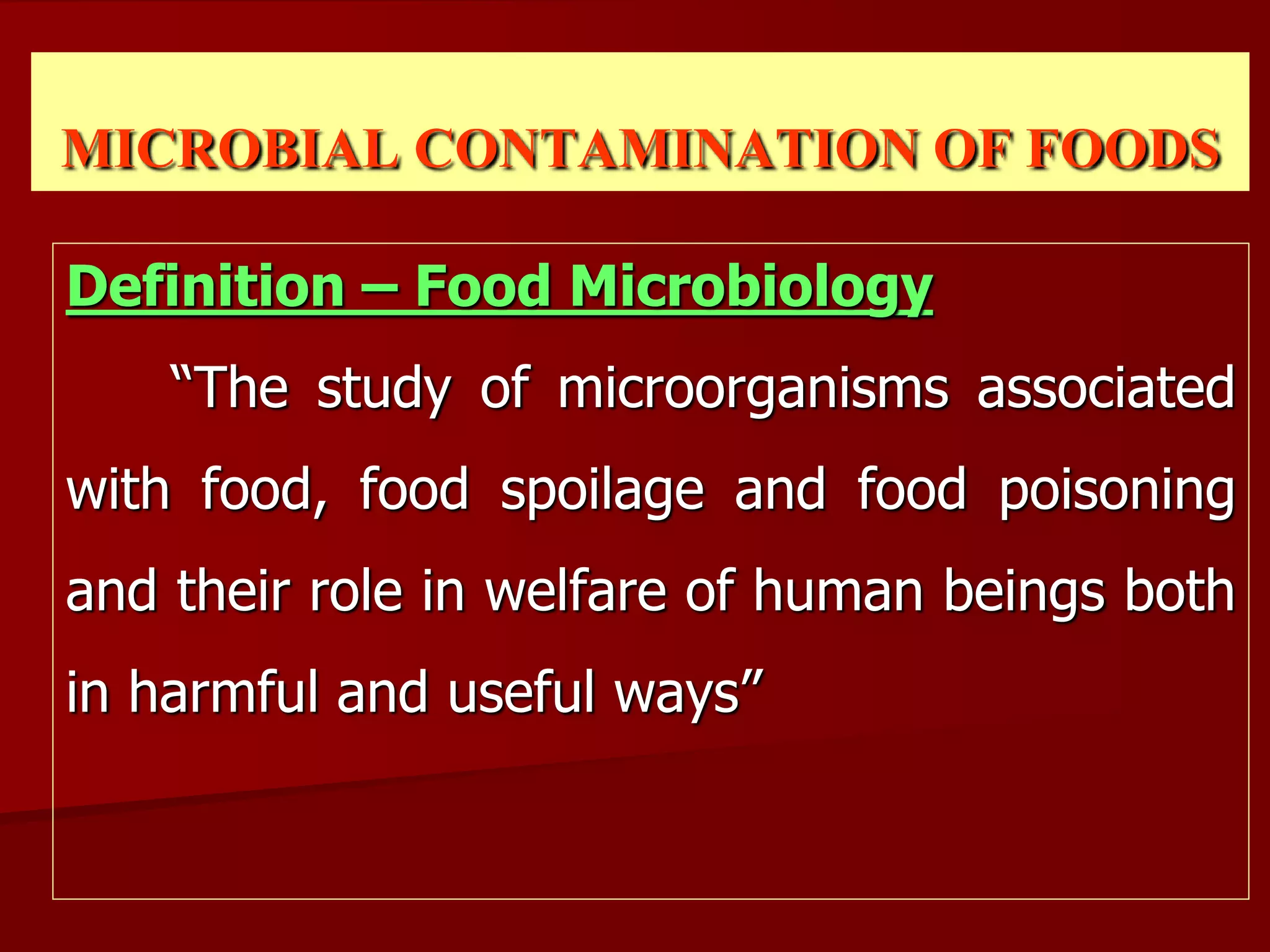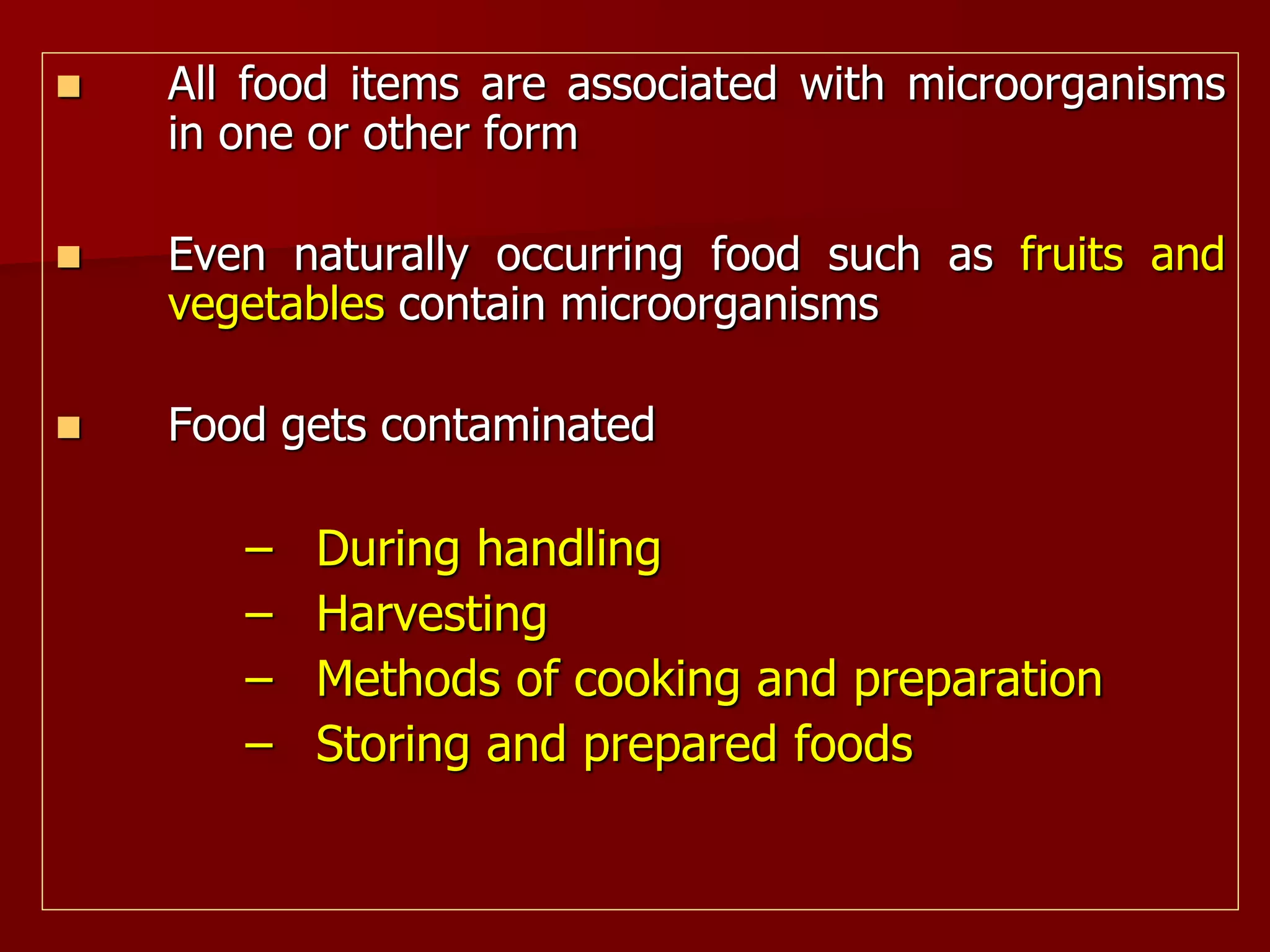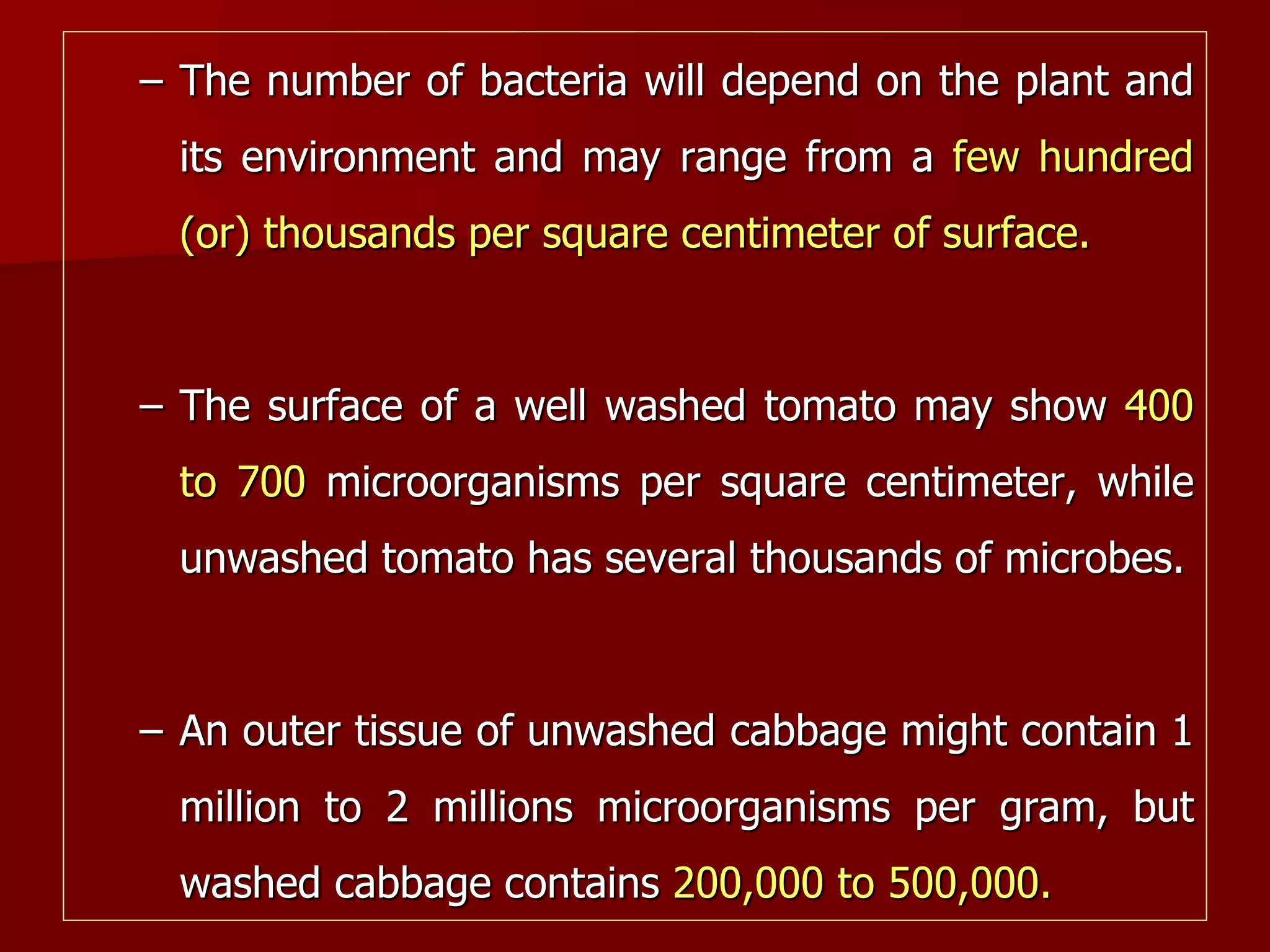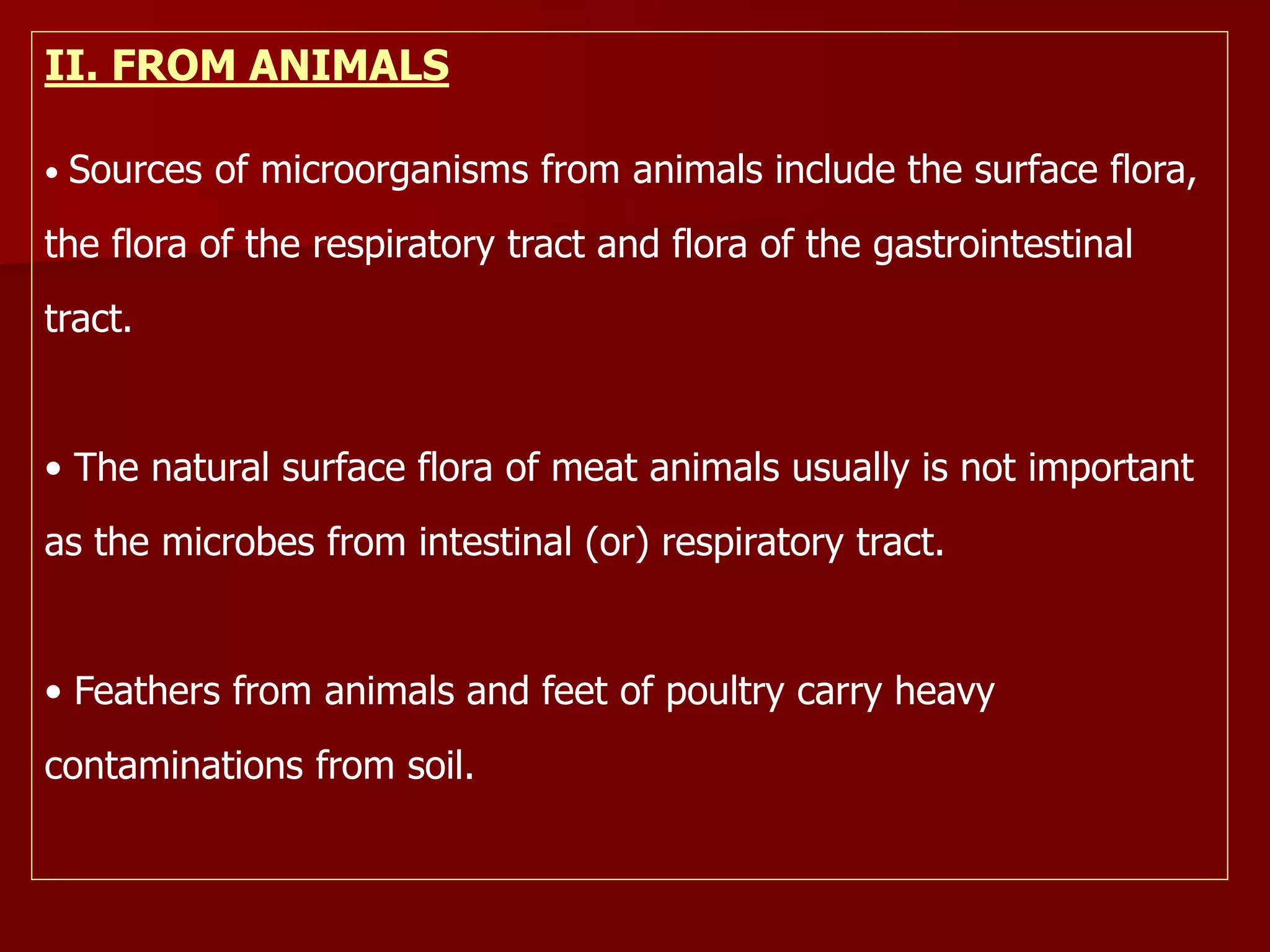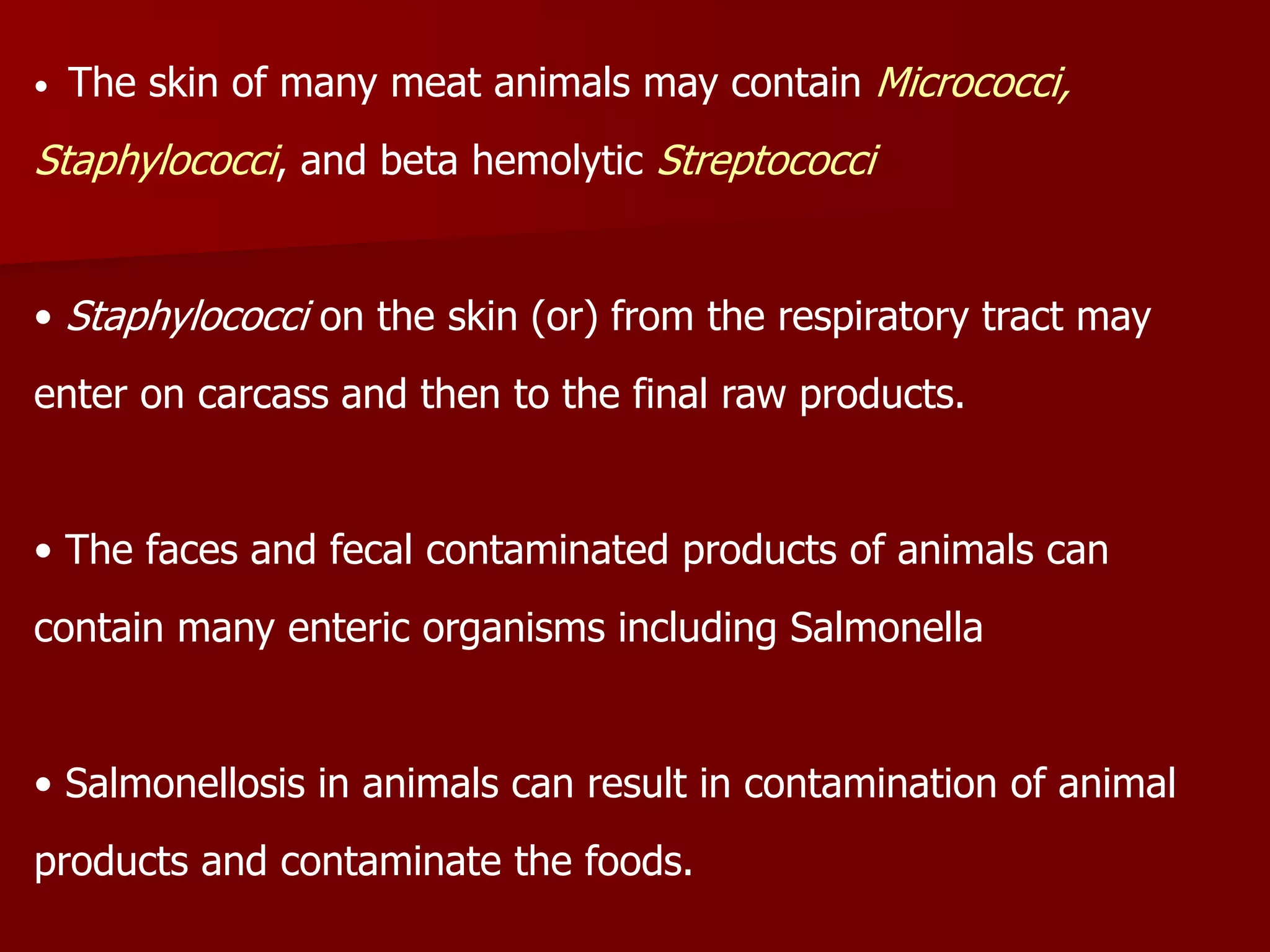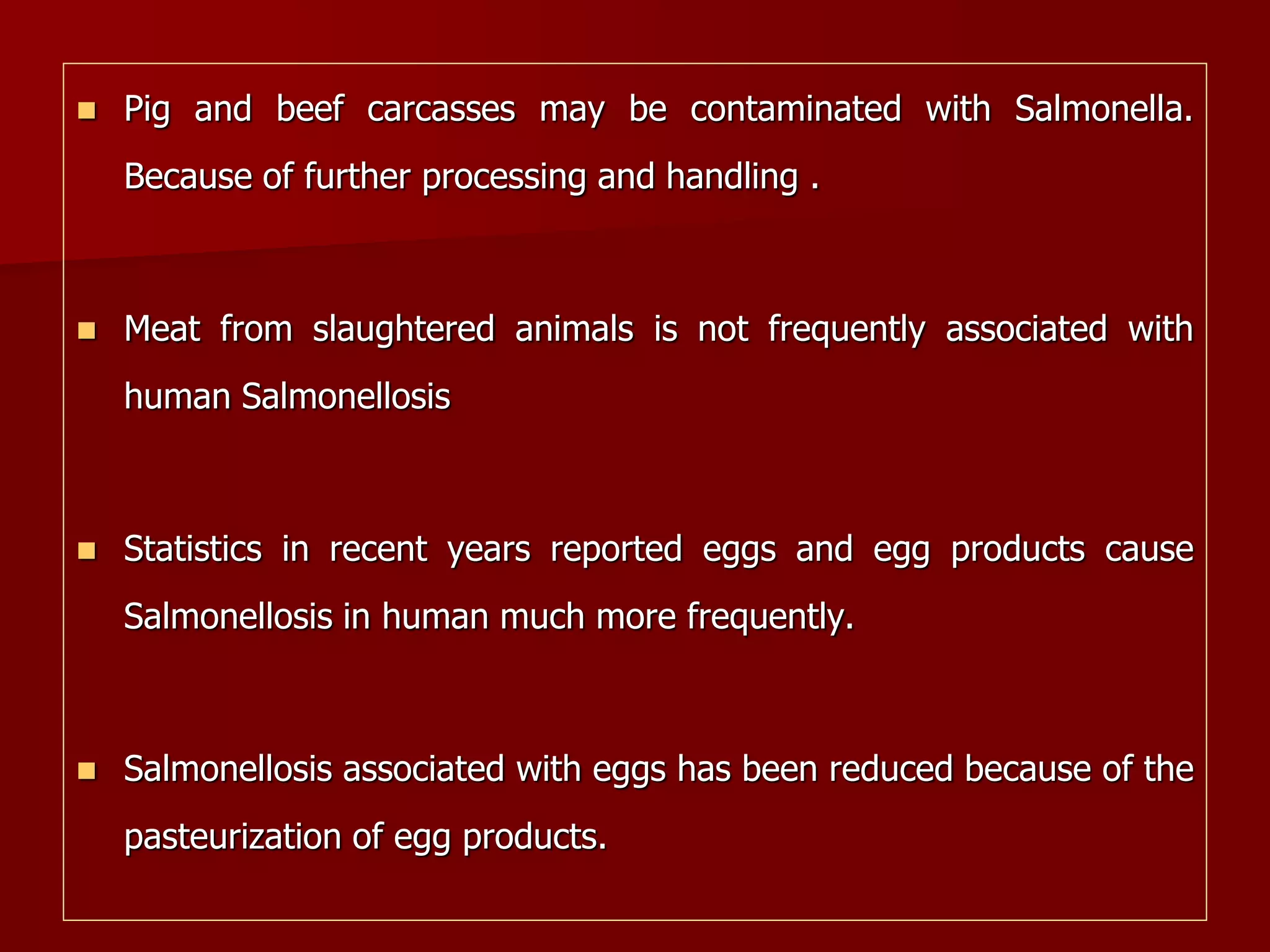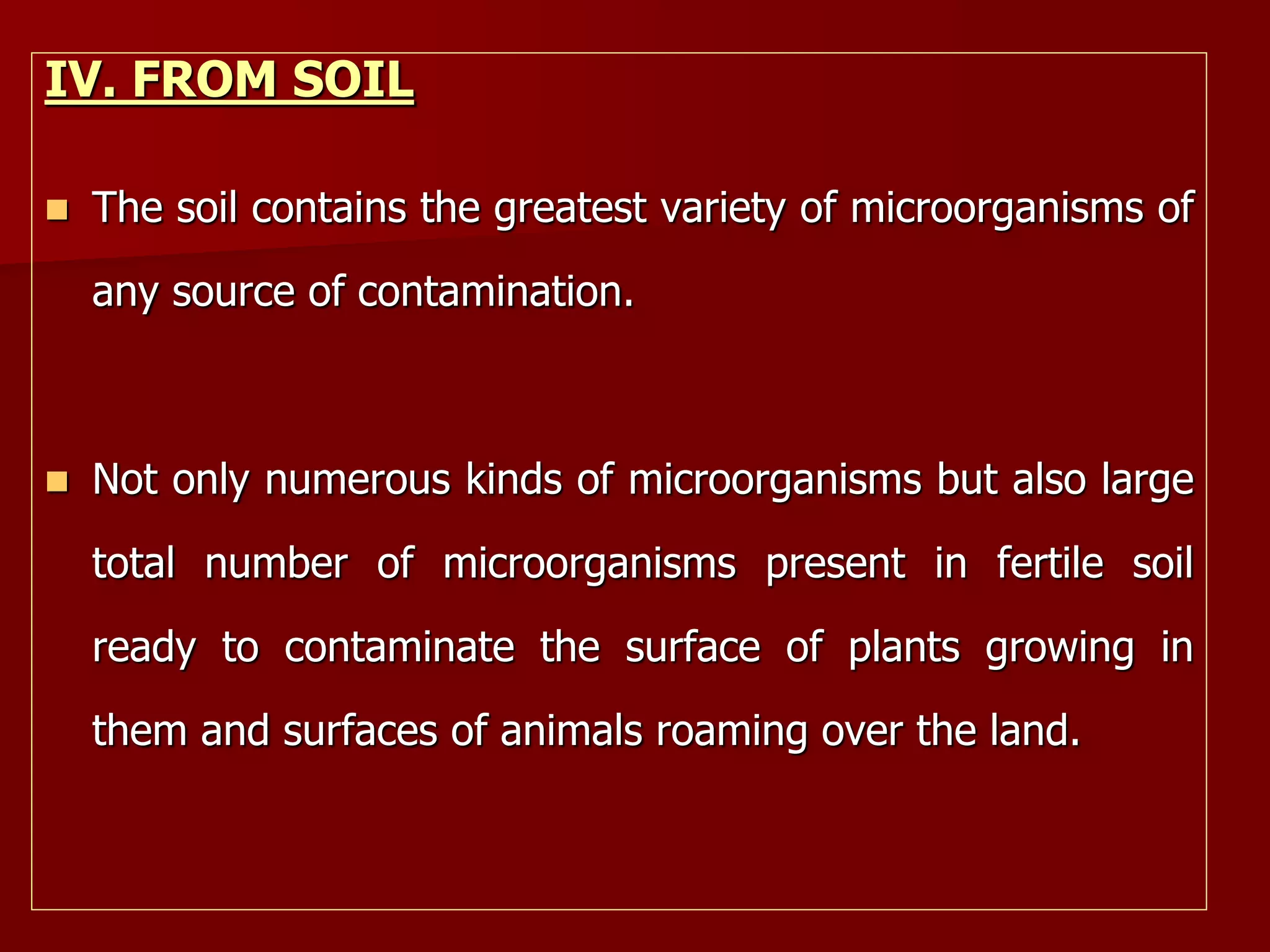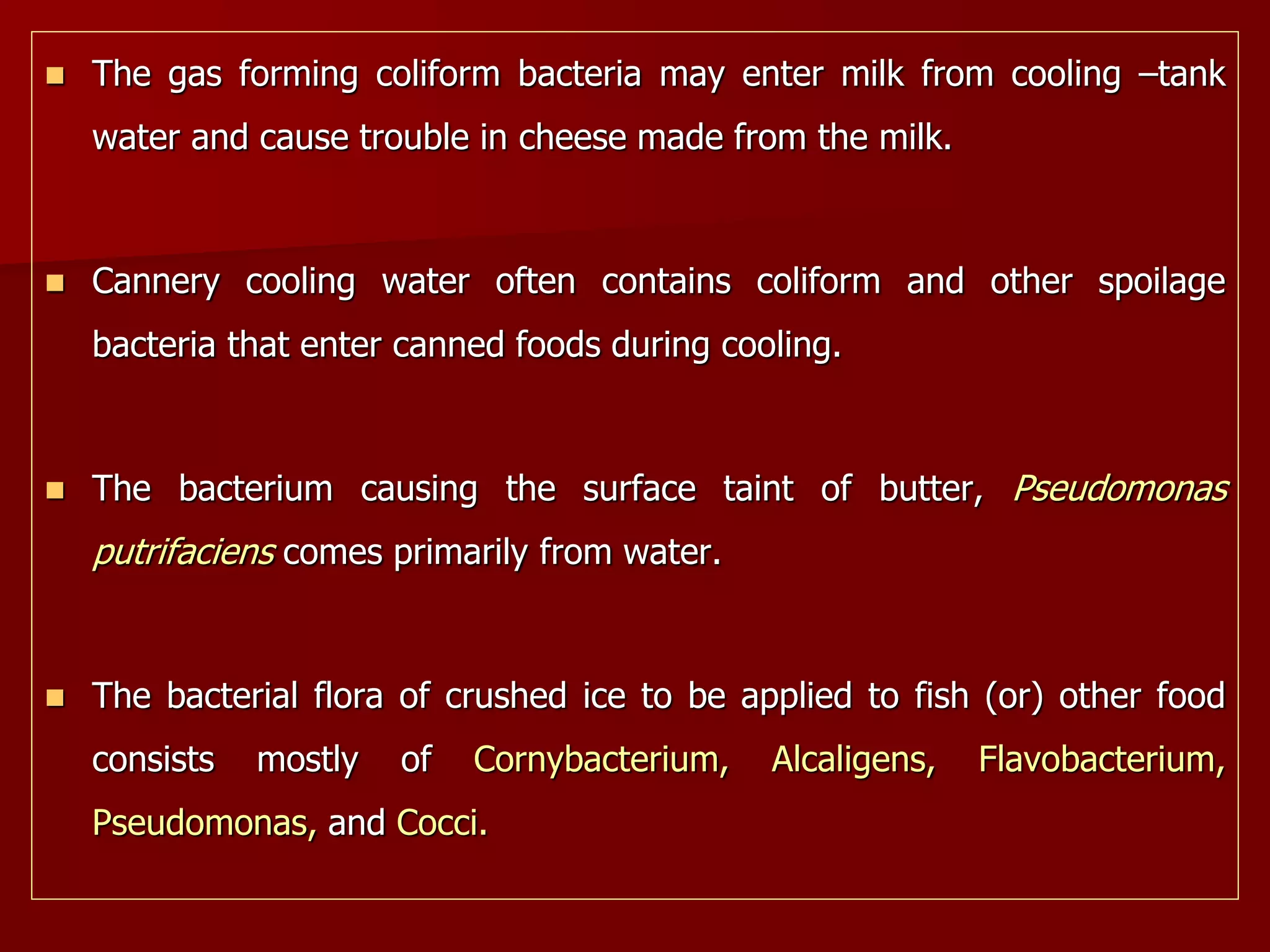This document discusses the microbial contamination of foods from various sources. It explains that all foods naturally contain microorganisms and can become contaminated during harvesting, handling, cooking, storage, and processing. The main sources of microbial contamination are from plants and fruits, animals and their products, sewage, soil, water, air, and during handling and processing of foods. Pathogens like Salmonella can contaminate foods and spread illness. Proper handling, cleaning, and food safety practices are needed to minimize microbial contamination from these sources.

